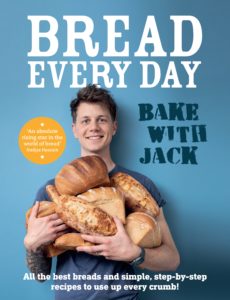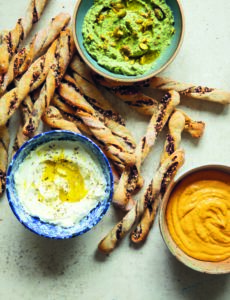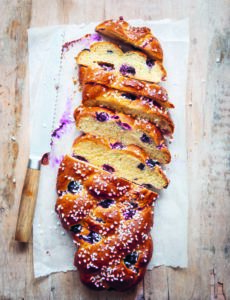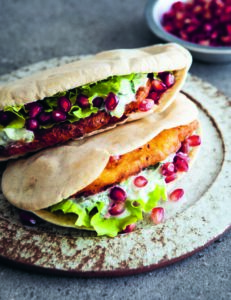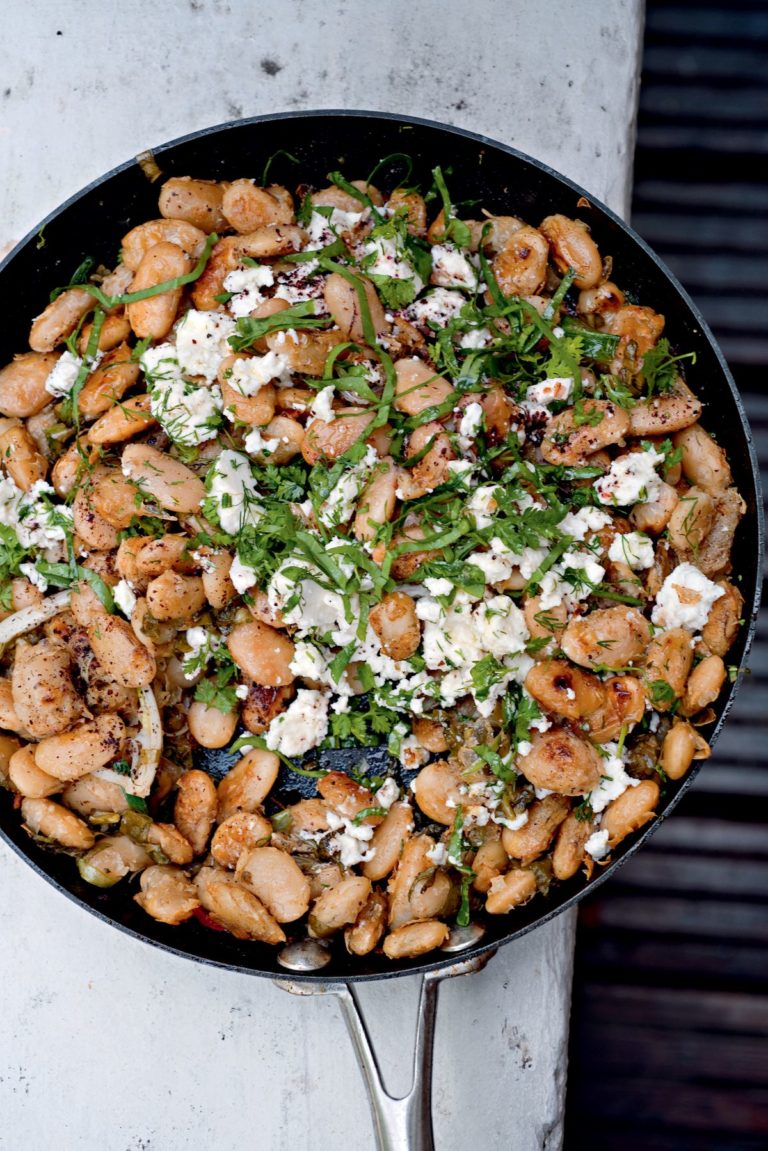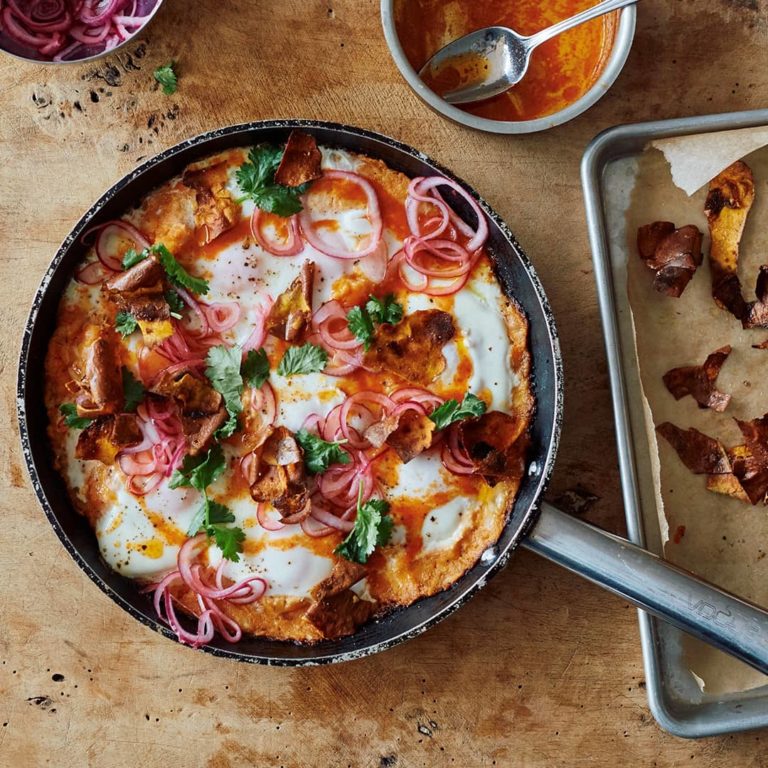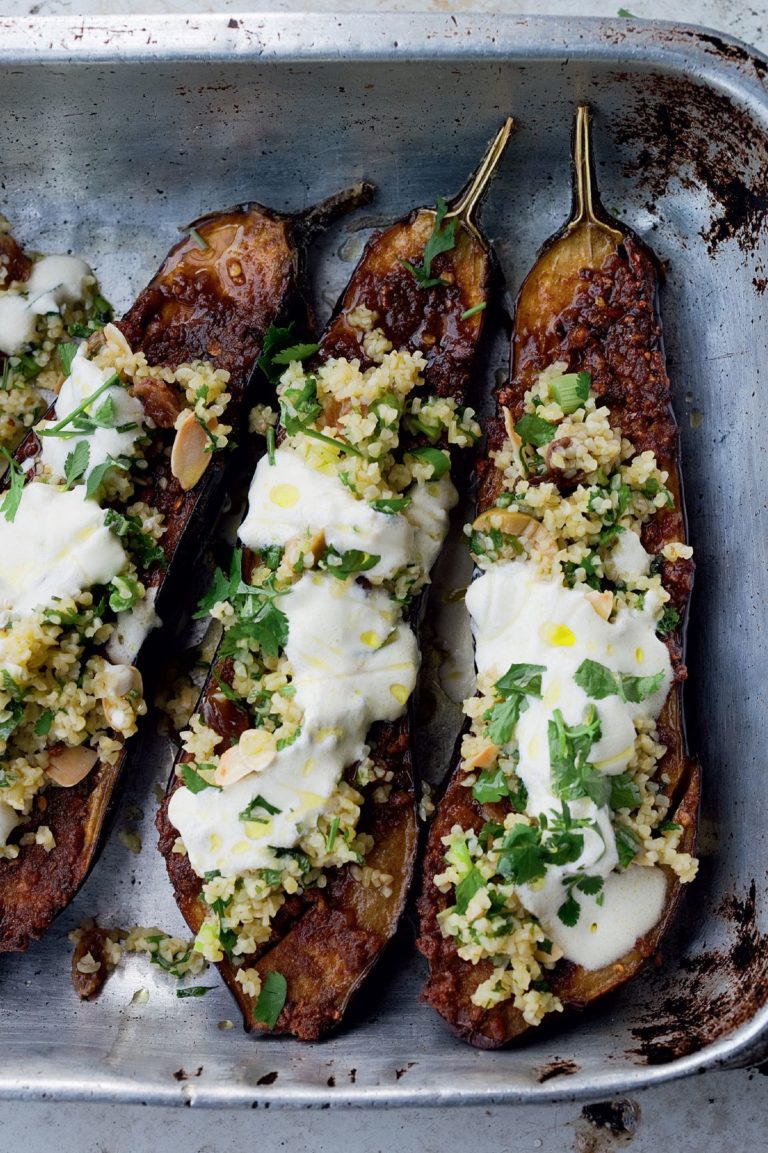Focaccia is a flat bread. It’s not as flat as a tortilla wrap or a pitta but what I’m trying to say is that there’s no shape or structure to speak of. It’s not a tall and proud loaf or a plump bloomer, it’s tray baked and in that sense could be considered a little easier to make, and make well, than other types of bread.
It’s also quite a wet dough and the additional moisture encourages the gluten to develop without us having to apply physical energy to make that happen (kneading). Wet doughs make lighter and fluffier bread, and skipping the kneading means we retain some of the natural bubble structure of the dough itself, encouraging an inconsistent crumb structure full of character. We can also go overboard with additional moisture since it won’t affect the shape and will only make things better. You see how these principles all come together so nicely? It’s all of those things in harmony that make focaccia so great.
Focaccia is all about olive oil, and the good stuff at that. It goes IN the dough, it goes ON the dough, and when it’s baked we drizzle a little extra over the top for good measure. The oil makes the crust crispy and the base almost fried. Focaccia toppings are also essential for communicating flavour down into the bread and the options are limitless. You can pretty much put anything on it, from classic rosemary and rock salt to last Sunday’s leftover roasted carrots with goat’s cheese, honey and pumpkin seeds. There are just a few rules to follow on your quest to find your signature combination:
- Don’t choose ingredients that make your bread wet. Chunky tomatoes will turn to mush and make your bread soggy and pappy to eat. Stick to cherry tomatoes halved with the juice squeezed out, and try not to overload the dough with them.
- Woody herbs have an amazing flavour that the oil will absorb and transport down into the bread. I’m talking about rosemary, fresh oregano, sage and thyme. Soft herbs like parsley or chervil will dry out during baking and lose their flavour.
- Toppings must be mixed with a generous amount of olive oil. Like I said before, the oil carries the flavour down into the bread and stops everything from burning on top. Imagine sliced garlic placed on top of dry bread dough – it would immediately burn to a crisp in the oven. Oil is your burn buffer.
Let focaccia be your excuse to enjoy playing with flavours, combining sweet with savoury and making it entirely your own. Stick to the dough recipe, top it however you like and HAVE FUN!
From the book
Buy From
Rosemary and Sea Salt Focaccia
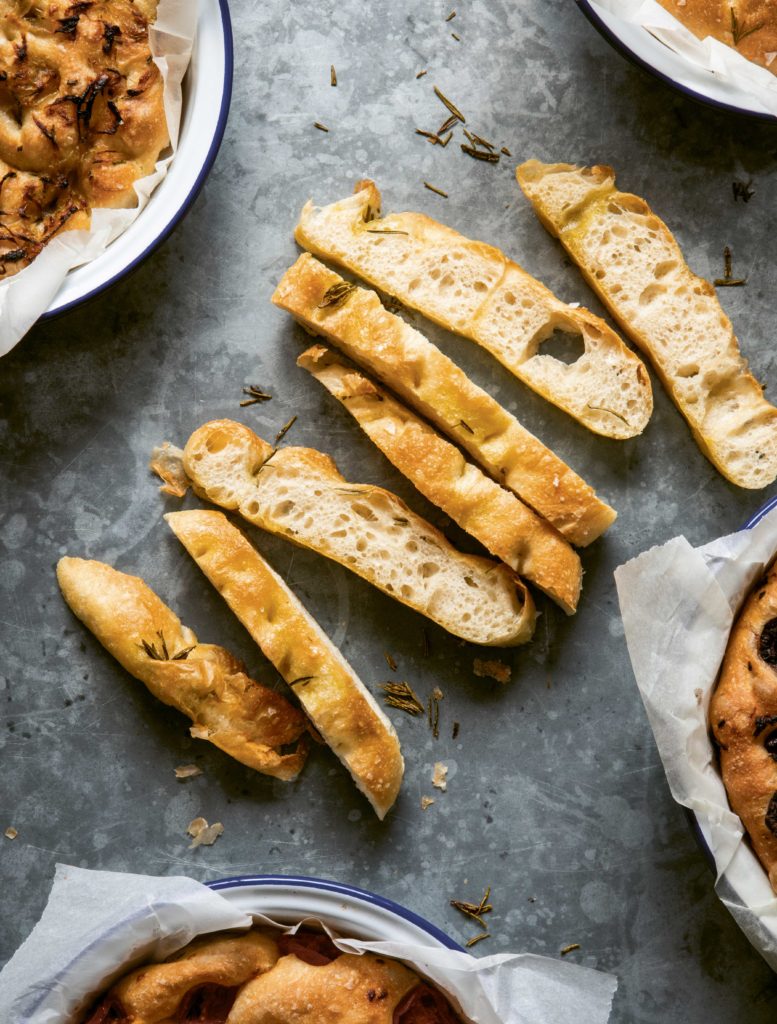
Ingredients (makes 1 large focaccia or 4 small):
190g (6¾oz) room-temperature milk
190g (6 ¾oz) room-temperature water
12g (½oz) fresh yeast, crumbled, or 7g (¼oz) fast-action dried yeast
500g (1lb 2oz) strong white bread flour
8g (¼oz) salt
20g (¾oz) olive oil, plus extra for oiling
For the topping:
3 fresh rosemary sprigs
olive oil
sea salt flakes
You will need: a high-sided baking tray about 30 x 40cm (12 x 16in) for making one large focaccia or 4 x 22cm (8 ½in) round enamel pie tins for 4 small focaccias (I prefer the latter because these are quicker to bake with less risk of toasting the toppings and losing their flavour, plus they look wicked!)
Method:
Making the dough: 5–10 minutes
1. In a large mixing bowl,mix together the milk, water and yeast until the yeast has dissolved.
2. Add the flour and salt, then mix with a dough scraper until the mixture starts to come together. Add the olive oil and mix again into a dough – as we are not kneading this one, it’s really important that it comes together into a cohesive mass with no lumps or dry or oily patches.
Resting: 30 minutes
3. Cover the bowl with an upturned bowl and rest at room temperature for 30 minutes.
First fold: 5 minutes
4. Oil an area of clean work surface. Oil the surface of your dough and turn it out upside down onto the oily patch. For this first fold, we are the most thorough. Grasp a bit of the dough edge, stretch it out and then fold it over onto the dough. Repeat all the way round the dough, making about 10–12 folds, until you have a ball.
Resting: 45 minutes
5. Turn the dough over, smooth side up, and place it back in the bowl. Cover as before and rest for 45 minutes.
Second fold: 2 minutes
6. Oil your work surface again, then turn the dough out upside down onto it. Repeat the first fold process BUT this time make only 6 to 8 folds.
Resting: 45 minutes
7. Turn the dough smooth side up and place it back in the bowl. Cover and rest as before.
Third fold: 2 minutes
8. Repeat the second fold process as before.
Resting: 30 minutes
9. Turn the dough smooth side up and place it back in the bowl. Cover as before BUT this time rest for 30 minutes.
10. Meanwhile, make your topping. Pick your rosemary leaves and place them in a bowl and add 4–5 tablespoons of olive oil. Mix together and set aside.
Dividing, shaping and topping: 5–10 minutes
11. If you’re making one large focaccia, line your high-sided baking tray with baking parchment. Drizzle with a little olive oil and slide the whole dough pillow out of the bowl and into the tray.
12. If making 4 small focaccias, line and oil your pie tins as above. Slide the dough onto the work surface, smooth side up, cut it into 4 pieces with your dough scraper and carefully transfer each piece into a prepared tin. Be gentle with your dough to keep as much gas inside it as possible.
13. Press your puffy dough all over with your fingertips, right down to the tray, to create dimples and to spread the dough out naturally – don’t try to stretch your dough sideways to make it fit the tray, as it will only ping back and go crinkly! And be careful not to flatten the dough and lose too much gas. Pour the rosemary oil over the top and dimple the dough again with your fingertips.
Resting: 45 minutes–1 hour
14. Let the focaccia rest, uncovered, for a final 45 minutes–1 hour until risen and delicate to the touch.
15. Towards the end of resting, preheat your oven to 200°C fan/425°F/Gas Mark 7 with a shelf in the middle, or 2 if using pie tins, and a deep roasting tray on the oven floor. Half fill a kettle.
Baking: 25–40 minutes
16. Boil the kettle.
17. Sprinkle a little sea salt evenly over the top of your focaccia. Place your baking tray or tins on the oven shelf or shelves and carefully pour the hot water into the tray below. Bake for 30–40 minutes for the large tray or 25–30 minutes for the pie tins. Slide a knife underneath the bread, lift it and take a peep. If it’s golden all over the underside, it’s ready, but if it’s still a little pale in the centre, bake for another 5 minutes and check again.
18. Drizzle once again with olive oil, then remove the focaccia from the tray or tins as soon as it’s cool enough to handle and let the focaccia cool completely on a wire rack.
Jack Sturgess is the author of the essential, accessible guide to bread-baking, Bread Every Day. If you loved this recipe, you’ll find plenty more in Jack’s cookbook, alongside illustrated step-by-step instructions, guides on kit and key techniques, and delicious ways to help you get the most out of your bread, from sandwiches to salads, breakfasts to desserts.
Find this recipe and more in
